The Smile is a dramatic feat of engineering at London Design Festival
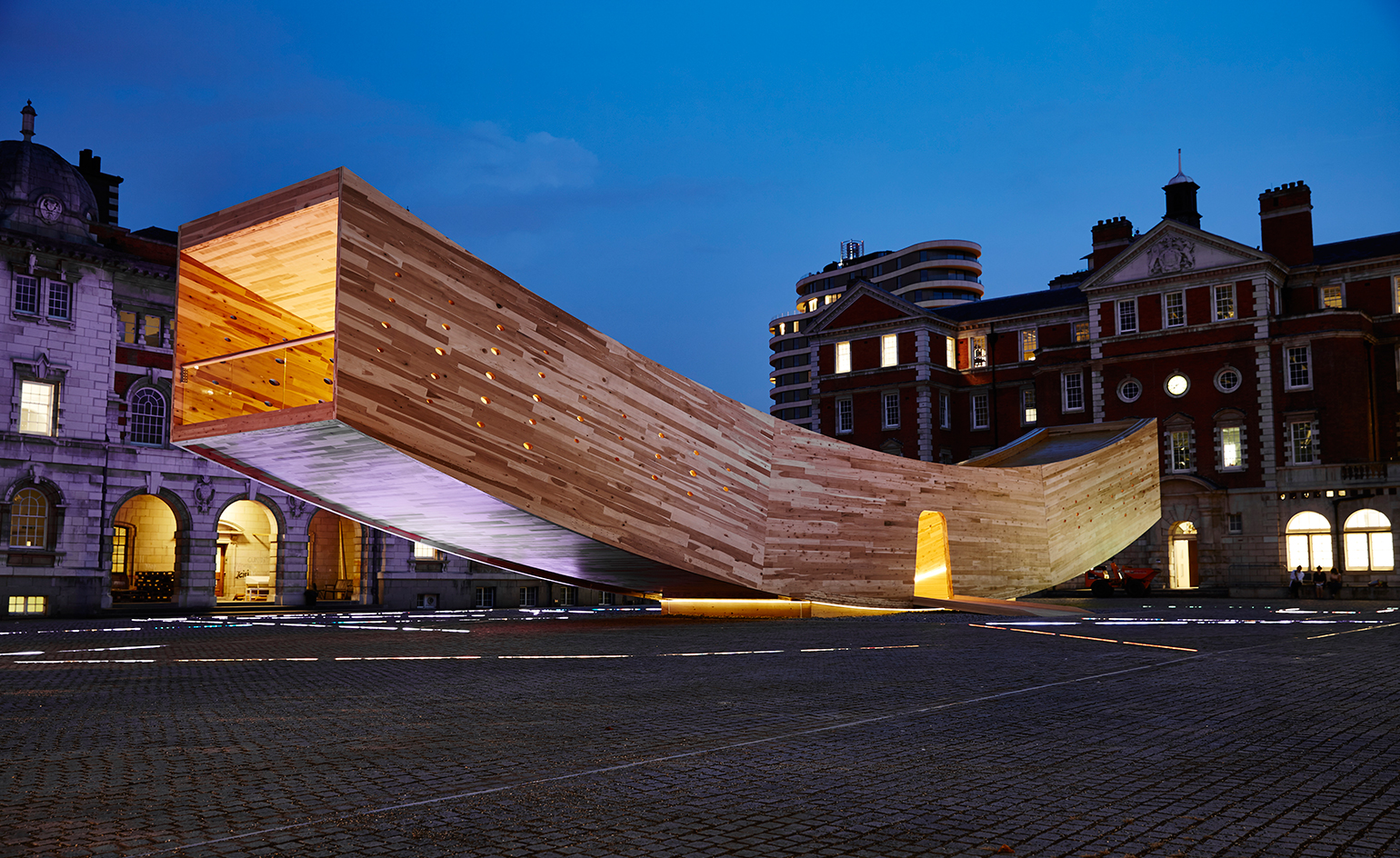
Softwood may have been the material of choice for timber architecture up to now, but hardwood has just made a dramatic entrance. 'It is simply the most challenging thing that has ever been built in cross-laminated timber [CLT]… anywhere,' says Andrew Lawrence, an associate director at Arup, about the gravity-defying 34m-long cantilevering curved tube devised by the American Hardwood Export Council (AHEC), London-based architects Alison Brooks and Arup for this year’s London Design Festival.
The Smile, as the project is known, eschews the usual European spruce for a fast-growing tulipwood from North American forests, that has been transformed into 12 huge cross-laminated panels ('the largest hardwood CLT panels ever made', says Lawrence) and is held together by 6,000 long steel screws.
'Almost every architect we talk to says we love CLT but we don’t like the look of it!' says David Venables, European director of AHEC. The organisation has been experimenting with hardwood structures for some years now and believes the material offers the same weight and density as softwood but twice the strength and a far more appealing aesthetic (fewer knots and a classic tight timber grain).
Hardwood may cost more, acknowledges Venables, but you also need to use less of it. 'In the future we will see panels where three of the layers are softwood but the outer layers are tulipwood, for instance,' he says. 'And we will see it used in higher-end buildings where appearance really matters,' adds Lawrence. 'What’s so fun about designing in wood,' he adds, 'is that architects and engineers have to work really closely together and the way a structure is made and engineered becomes part of the architecture.'
Even more exciting is the fact that CLT is carbon neutral, sustainable (the 240 cubic metres of tulipwood used to create this particular ‘flying pavilion’ were replaced in less than five minutes) and, in the words of Alison Brooks, 'connects us back to nature in a way that is not nostalgic or rustic. It’s a material of the future.'
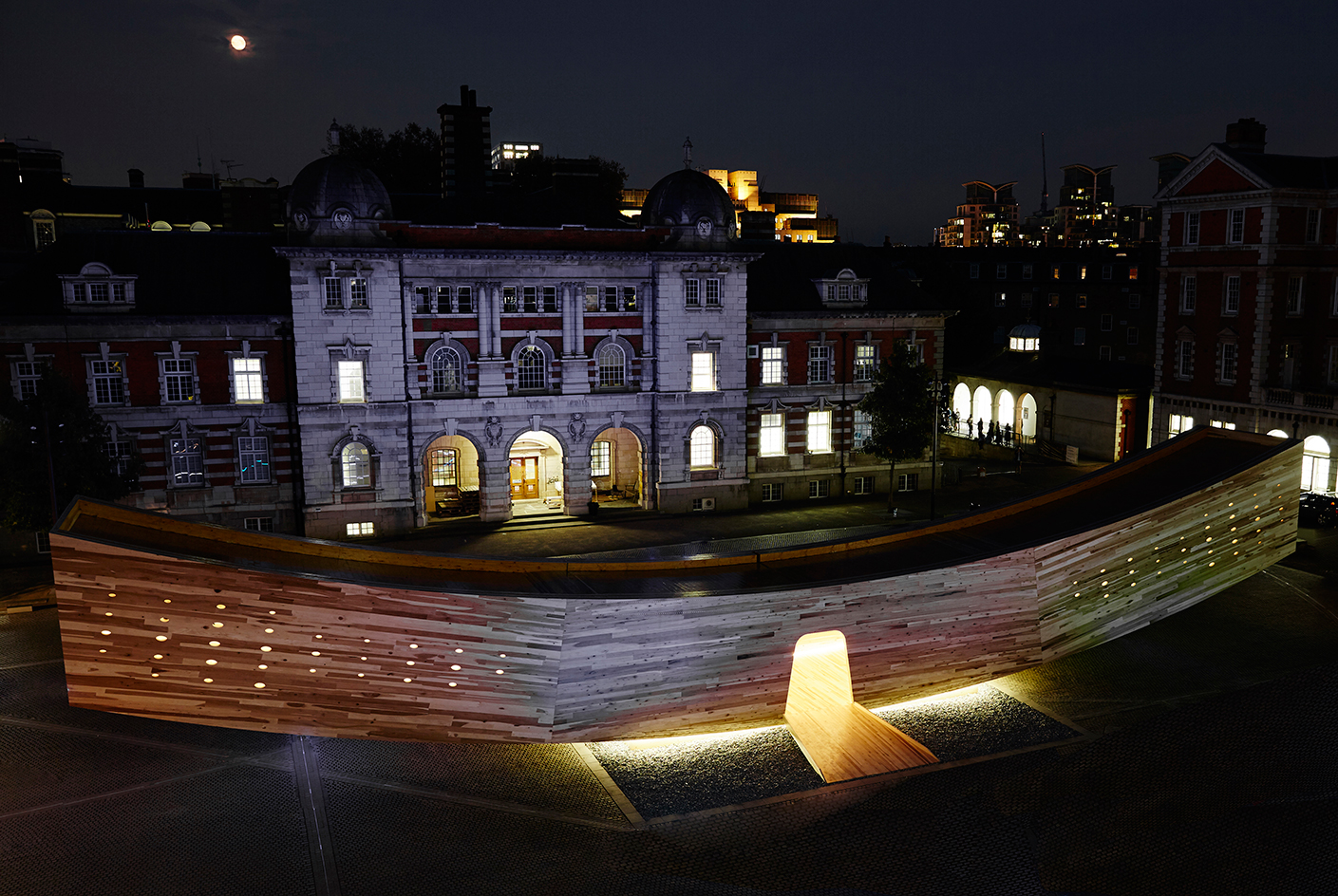
Set outside London's Chelsea College of Art and Design, the sculpture eschews the usual European spruce for a fast-growing tulipwood from North American forests, that has been transformed into 12 huge cross-laminated panels held together by 6,000 long steel screws
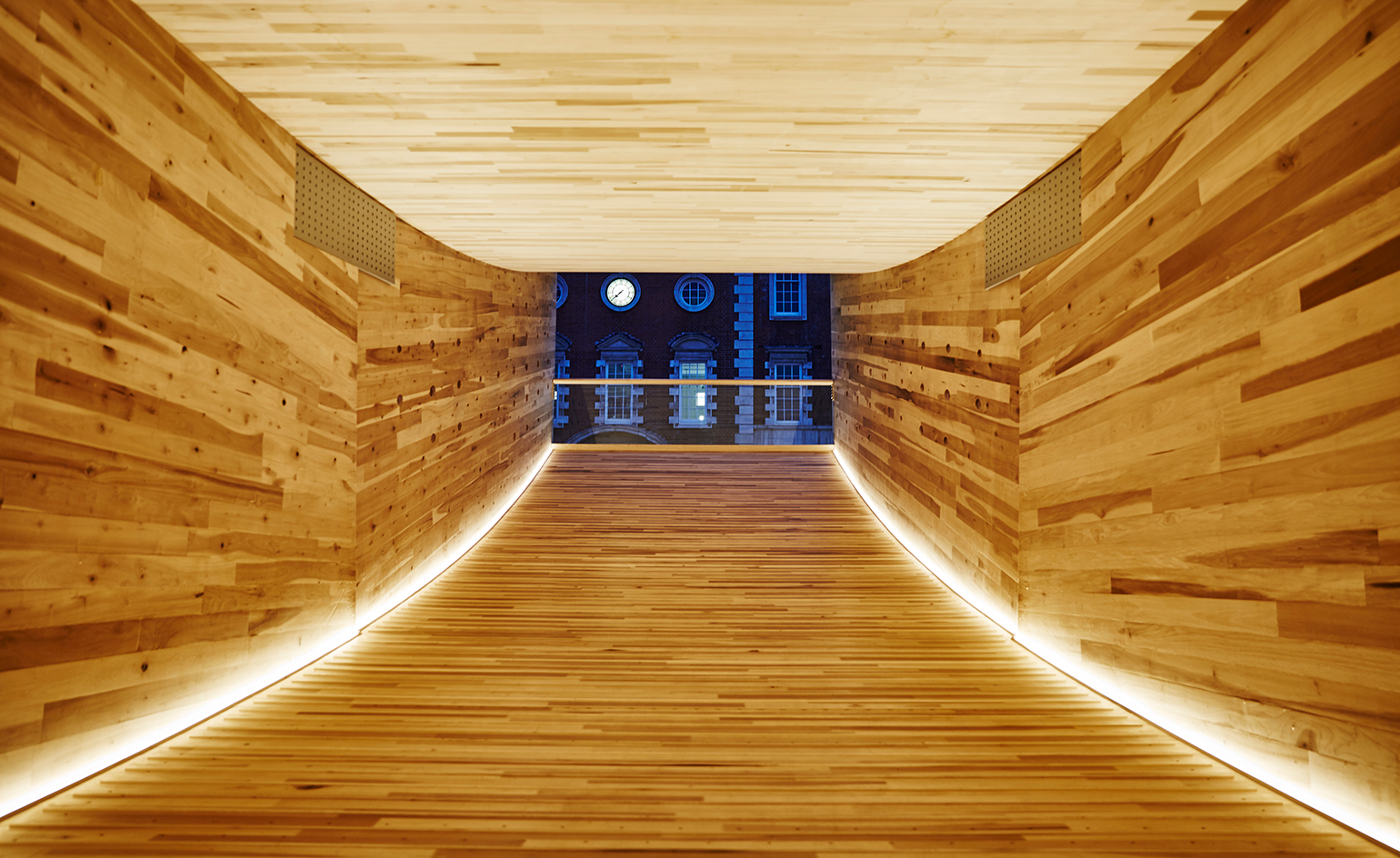
'It is simply the most challenging thing that has ever been built in cross-laminated timber [CLT]… anywhere,' says Andrew Lawrence, an associate director at Arup, about the gravity-defying 34m-long cantilevering curved tube
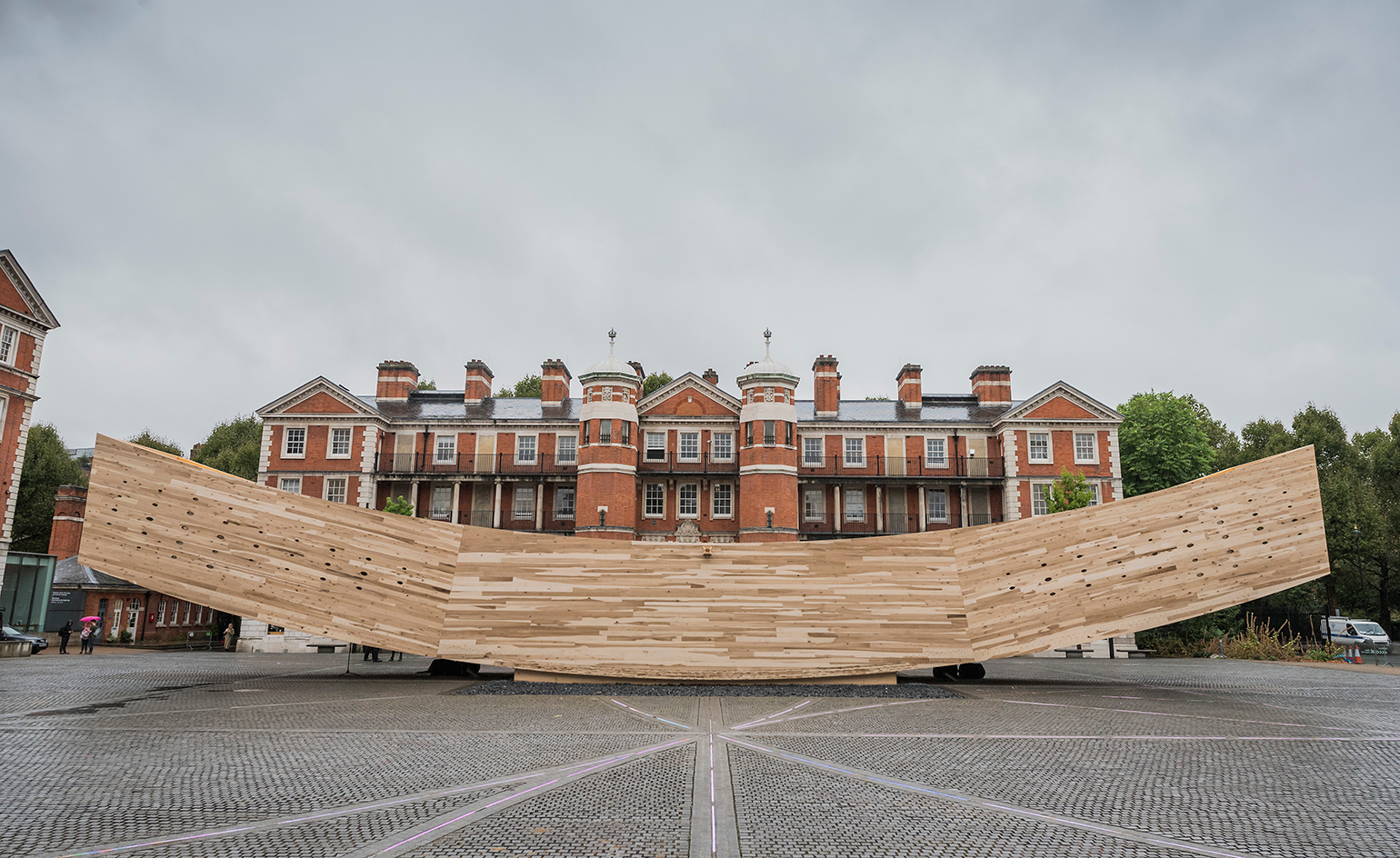
Softwood may have been the material of choice for timber architecture up to now, but 'The Smile' sees hardwood make a dramatic entrance
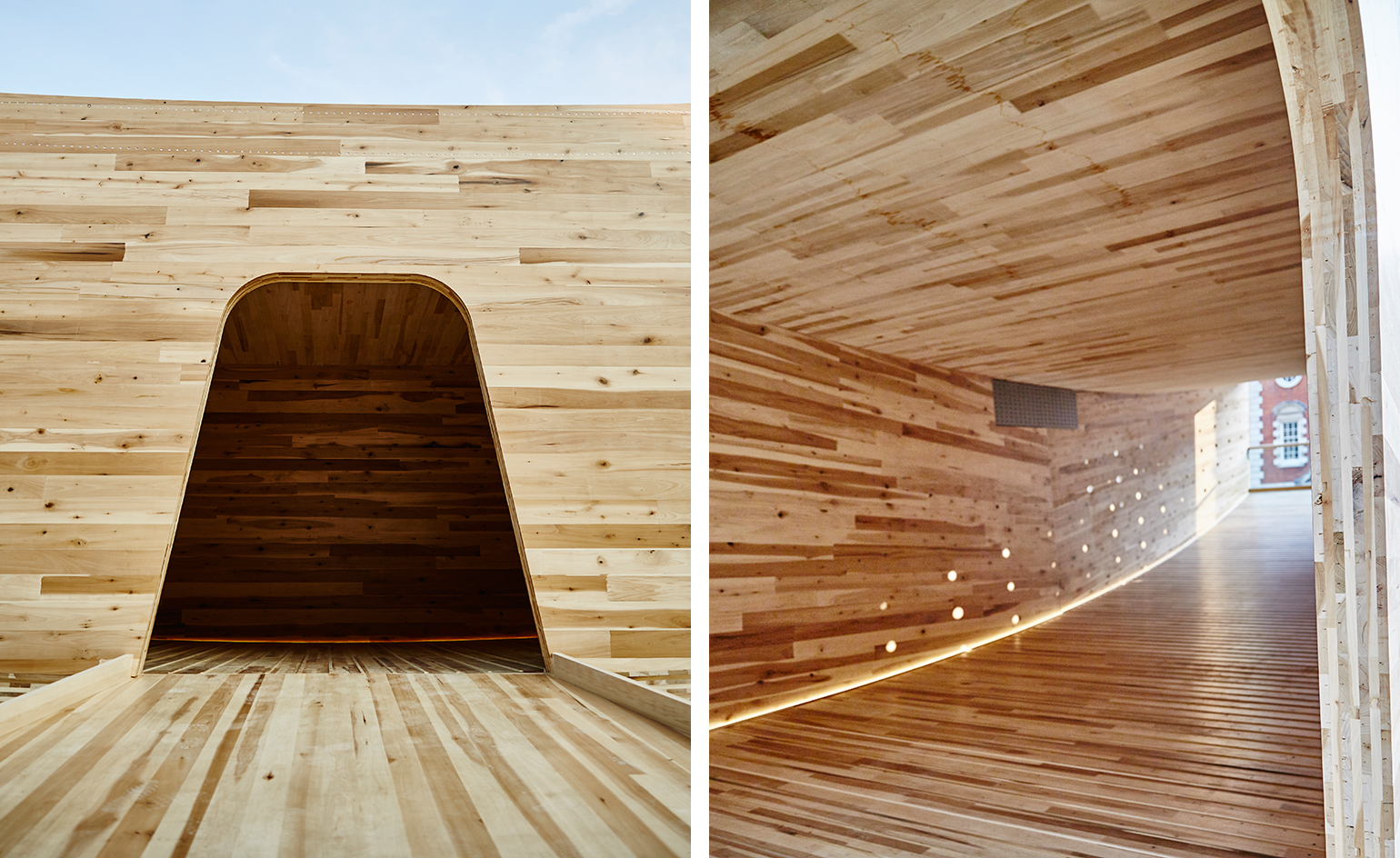
The AHEC has been experimenting with hardwood structures for some years now and says the opportunities offered by hardwood are the same weight and density but twice the strength and a far more appealing aesthetic than softwood
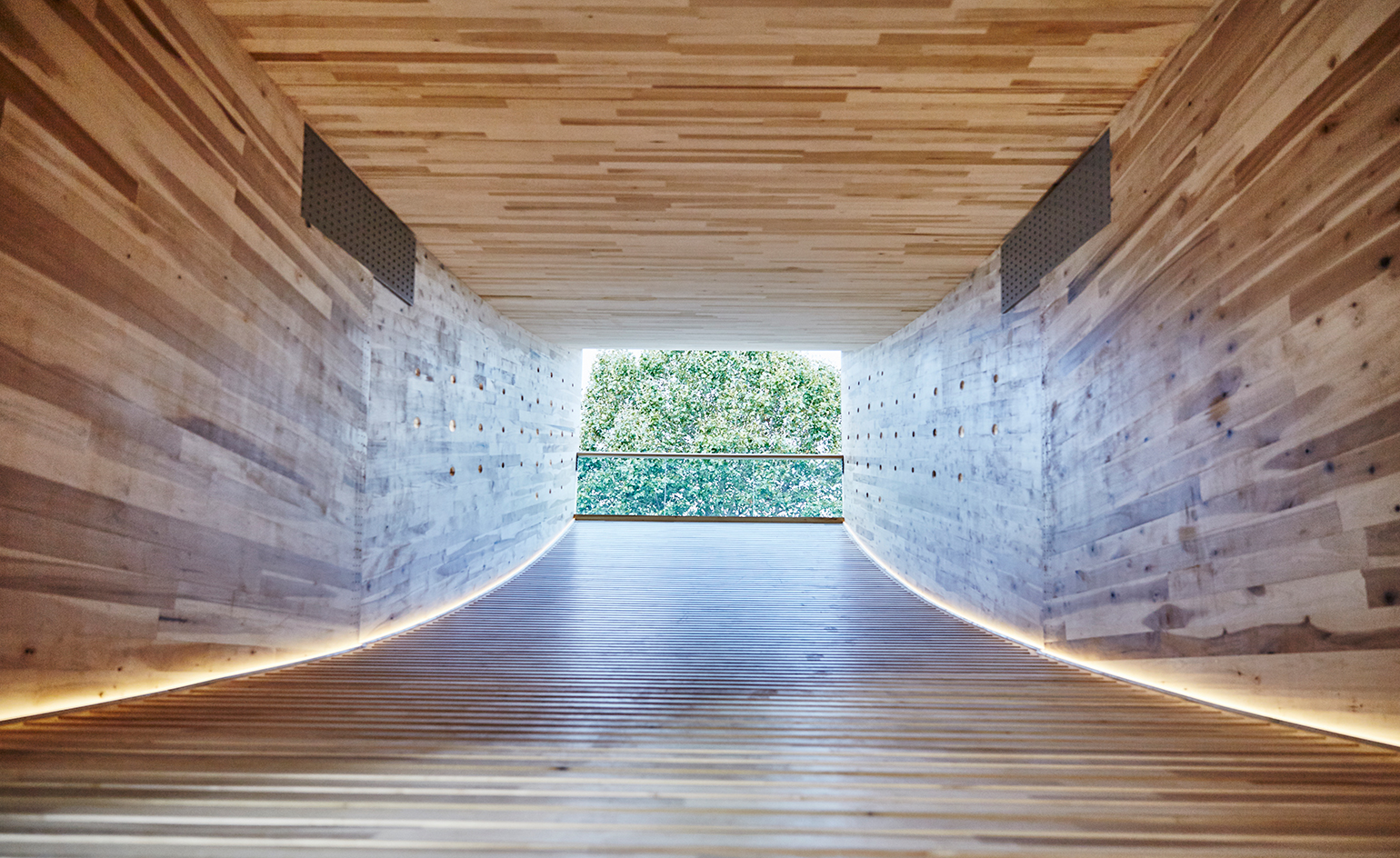
'What’s so fun about designing in wood,' says Lawrence, 'is that architects and engineers have to work really closely together and the way a structure is made and engineered becomes part of the architecture'
INFORMATION
’The Smile’ is on view until 25 September. For more information, visit the London Design Festival website
ADDRESS
Rootstein Hopkins Parade Ground
Chelsea College of Art and Design
16 John Islip Street
London, SW1P 4JU
Receive our daily digest of inspiration, escapism and design stories from around the world direct to your inbox.
Giovanna Dunmall is a freelance journalist based in London and West Wales who writes about architecture, culture, travel and design for international publications including The National, Wallpaper*, Azure, Detail, Damn, Conde Nast Traveller, AD India, Interior Design, Design Anthology and others. She also does editing, translation and copy writing work for architecture practices, design brands and cultural organisations.
-
 Is the Waldorf Astoria New York the ‘greatest of them all’? Here’s our review
Is the Waldorf Astoria New York the ‘greatest of them all’? Here’s our reviewAfter a multi-billion-dollar overhaul, New York’s legendary grand dame is back in business
-
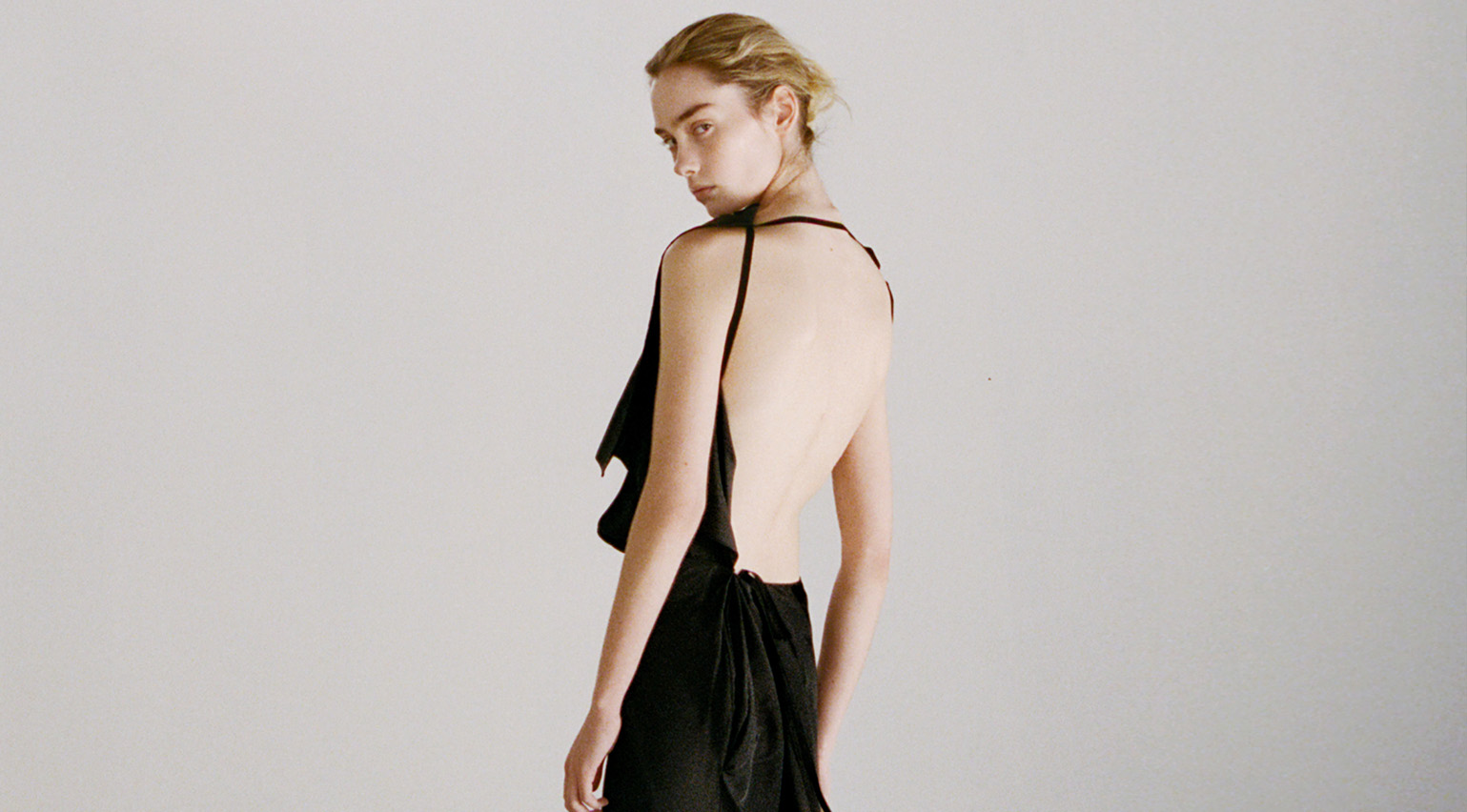 Colleen Allen’s poetic womenswear is made for the modern-day witch
Colleen Allen’s poetic womenswear is made for the modern-day witchAllen is one of New York’s brightest young fashion stars. As part of Wallpaper’s Uprising column, Orla Brennan meets the American designer to talk femininity, witchcraft and the transformative experience of dressing up
-
 A new Korean garden reimagines tradition for the 21st century
A new Korean garden reimagines tradition for the 21st centuryThe new Médongaule Korean Gardens in Gyeonggi Province explore the country’s rich tradition; within it, the Seongok Academy Building provides a layered spatial experience drawing on heritage and a connection with nature
-
 Fulham FC’s new Riverside Stand by Populous reshapes the match-day experience and beyond
Fulham FC’s new Riverside Stand by Populous reshapes the match-day experience and beyondPopulous has transformed Fulham FC’s image with a glamorous new stand, part of its mission to create the next generation of entertainment architecture, from London to Rome and Riyadh
-
 This modern Clapham house is nestled indulgently in its garden
This modern Clapham house is nestled indulgently in its gardenA Clapham house keeps a low profile in south London, at once merging with its environment and making a bold, modern statement; we revisit a story from the Wallpaper* archives
-
 Step inside this perfectly pitched stone cottage in the Scottish Highlands
Step inside this perfectly pitched stone cottage in the Scottish HighlandsA stone cottage transformed by award-winning Glasgow-based practice Loader Monteith reimagines an old dwelling near Inverness into a cosy contemporary home
-
 This curved brick home by Flawk blends quiet sophistication and playful details
This curved brick home by Flawk blends quiet sophistication and playful detailsDistilling developer Flawk’s belief that architecture can be joyful, precise and human, Runda brings a curving, sculptural form to a quiet corner of north London
-
 A compact Scottish home is a 'sunny place,' nestled into its thriving orchard setting
A compact Scottish home is a 'sunny place,' nestled into its thriving orchard settingGrianan (Gaelic for 'sunny place') is a single-storey Scottish home by Cameron Webster Architects set in rural Stirlingshire
-
 Porthmadog House mines the rich seam of Wales’ industrial past at the Dwyryd estuary
Porthmadog House mines the rich seam of Wales’ industrial past at the Dwyryd estuaryStröm Architects’ Porthmadog House, a slate and Corten steel seaside retreat in north Wales, reinterprets the area’s mining and ironworking heritage
-
 Arbour House is a north London home that lies low but punches high
Arbour House is a north London home that lies low but punches highArbour House by Andrei Saltykov is a low-lying Crouch End home with a striking roof structure that sets it apart
-
 A former agricultural building is transformed into a minimal rural home by Bindloss Dawes
A former agricultural building is transformed into a minimal rural home by Bindloss DawesZero-carbon design meets adaptive re-use in the Tractor Shed, a stripped-back house in a country village by Somerset architects Bindloss Dawes